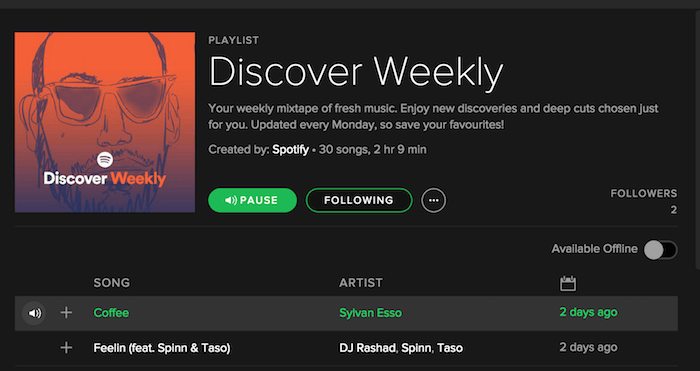Chances are your digital music service of choice uses some form of technology for the new tracks it recommends to you. But just how does this technology work? And how effective is it? The Sync Project takes a quick look.
There are essentially four ways we discover new tracks on digital music platforms: active personal curation (we search for and find music ourselves); social recommendations (we listen to what our friends are listening to); professional curation (a music expert employed by the platform suggests tracks we may like); and automated discovery (clever algorithms suggest new tracks based on our historical preferences).
How much each of these plays a part in your own personal music discovery experience depends both on your profile and on which service you’re using, but automated discovery is playing an increasingly important role overall.
So how does automated discovery technology work? Basically, in one of two ways: tracks are recommended to you based on what other people are listening to (so-called “collaborative filtering”), or tracks are recommended to you based on their similarity to other tracks you like (so-called “content-based modeling”). Let’s take a closer look at each…
Collaborative Filtering
Spotify’s “Discover Weekly” service – which each Monday provides subscribers with a tailored playlist of 30 songs that they didn’t have in their collection – is the perfect example of a collaborative filtering technique.
Explained in the simplest of terms, the science behind collaborative filtering goes something like this: if user A and user B both like track X, then they are more likely to appreciate other tracks liked by one another. So if user A has track Y in their collection and user B has track Z in their collection, then track Y and track Z will be recommended to users B and A respectively. Of course its not quite as simple as that in reality, and the algorithms behind the service are running these equations (and many more) en masse and with multiple variations in order to find the best 30 tracks to recommend on a given Monday.
Techniques like Collaborative Filtering use multiple threads (in this case, users) of music listening data to help you discover new artists and their songs.
Content-based Modeling
In order to understand the other main method of recommending tracks – content-based modeling – we need to turn back to the world’s largest attempt at understanding and classifying the essence of music: The Music Genome Project.
Initiated in the year 2000 by a team led by Nolan Ira Gasser (Chief Musicologist at Pandora), the Music Genome Project set about describing tracks by assigning them with a selection of 450 attributes (or “genes”), and then using an algorithm to organize these tracks according to their attributes. Each of the 450 assignable genes describes a specific characteristic used in the composition of a track, i.e. gender of vocalists, distortion levels, use of beats, etc. Some genres of music have more “genes” than others. Rock and pop, for instance, have the lowest with around 150 genes, while world and classical music can have up to the full 450.
Today, the work of the Music Genome Project is used by music service Pandora as the technology that recommends tracks on its radio stations to suit listener preferences. In actual fact Pandora uses something of a human/technology hybrid model, as a musicologist will first classify new tracks according to the gene methodology, and then the company’s matching algorithm will find similar ones. This way new tracks can be placed in a matrix alongside those with a similar genetic profile, and then recommended accordingly.
Which technique is better?
There are arguments to be made for both techniques, but for the purposes of concluding this article we will focus on what they have in common. First, anybody who has been using a music service for five years or more will attest to the fact that recommendations are getting better – no matter which technique is used. As more users and tracks are added, the algorithms grow and develop accordingly. The second point is that the more you listen, the more relevant the recommendations become.
